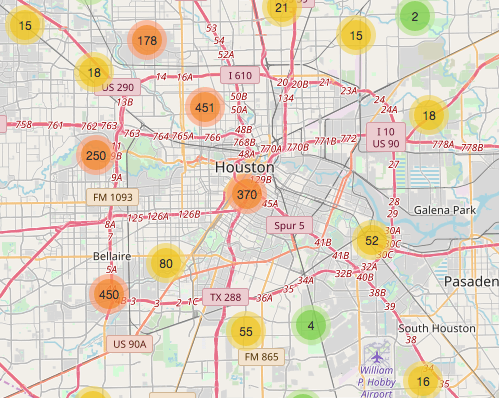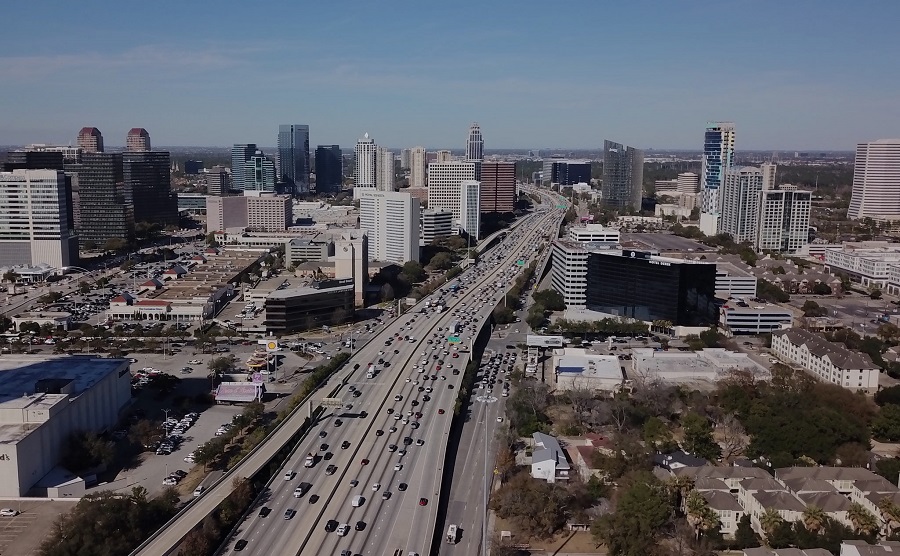HOUSTON DEVELOPMENT ANALOGIES YOU CAN EAT FOR BREAKFAST  Here’s a freshly baked city-development paradigm that’s a pretty good, but imperfect match for Houston, writes Christopher Andrews: “Houston’s inner core, at least that area within the I-610 loop, predominantly west of I-45, makes up most of the ‘new donut’ downtown area, even though Houston’s currently gentrifying and historically vibrant neighborhoods lie just outside of its downtown district. Our ‘Inner Suburbs and Inner Core’ portion of Houston (think Alief, Sharpstown, Southwest and Southeast Houston, Northside, Acres Homes) is continuing to age, and is evidenced when we look at home sale prices. Naturally, then the newer homes in the ‘Collar Counties’ (think Sugarland, Cinco Ranch, The Woodlands, Kingwood) attract families and professionals looking for new housing. That comprises Houston’s ‘new donut’ paradigm.” Why stop there? There are scone and English muffin models to consider too. But which breakfast item best describes the shape of the city? “While I love donuts, I like bagels too,” Andrews writes. “Houston’s development, and the downtown development in many cities, is more like the experience of having a cinnamon crunch bagel at Panera, which one can argue is much like a donut anyways. You know the bagel has a hole in it somewhere. It’s just filled in with sweet, cinnamon-y toasted sugar. You know the hole is there in the middle of the doughy periphery, it’s just filled in. Maybe that toasted cinnamon sugar filling is the gigantic amount of sweet public funding that cities have dedicated to building these stadiums, convention centers, and even residential developments.” [Not of It] Photo of Cinnamon Crunch Bagel: Panera
Here’s a freshly baked city-development paradigm that’s a pretty good, but imperfect match for Houston, writes Christopher Andrews: “Houston’s inner core, at least that area within the I-610 loop, predominantly west of I-45, makes up most of the ‘new donut’ downtown area, even though Houston’s currently gentrifying and historically vibrant neighborhoods lie just outside of its downtown district. Our ‘Inner Suburbs and Inner Core’ portion of Houston (think Alief, Sharpstown, Southwest and Southeast Houston, Northside, Acres Homes) is continuing to age, and is evidenced when we look at home sale prices. Naturally, then the newer homes in the ‘Collar Counties’ (think Sugarland, Cinco Ranch, The Woodlands, Kingwood) attract families and professionals looking for new housing. That comprises Houston’s ‘new donut’ paradigm.” Why stop there? There are scone and English muffin models to consider too. But which breakfast item best describes the shape of the city? “While I love donuts, I like bagels too,” Andrews writes. “Houston’s development, and the downtown development in many cities, is more like the experience of having a cinnamon crunch bagel at Panera, which one can argue is much like a donut anyways. You know the bagel has a hole in it somewhere. It’s just filled in with sweet, cinnamon-y toasted sugar. You know the hole is there in the middle of the doughy periphery, it’s just filled in. Maybe that toasted cinnamon sugar filling is the gigantic amount of sweet public funding that cities have dedicated to building these stadiums, convention centers, and even residential developments.” [Not of It] Photo of Cinnamon Crunch Bagel: Panera





Why does it have to be about breakfast foods? I liken Houston to a Target.. There’s an innermost circle of high concentrated wealth. A ring around it of poverty. And then an outer ring of wealth again. They are defined by ring roads, and connected by freeways that emanate put from the center.
.
Donut or bagel, (or pizza or quiche) doesn’t quite capture it the way a target does.
I’ve seen Houston likened to a reverse “C”, where the “C” part is the nearly-complete ring of poverty and poorly perceived schools in the middle, with the wealthy interior and outer parts connected by the narrow Buffalo Bayou corridor out to the west.
So the breakfast food you’re likening Houston to, Planner, is a croissant?
ZAW, I was simply using the paradigms that have been used by other urbanists for years. Aaron Renn at his Urbanophile site wrote about what he called “The New Donut” development paradigm, which yes, looks like a target. I thought that myself too. Local Planner, I can “see” what you mean. There’s not necessarily a clear cut ring around the city, and that’s why a wedge analogy (which has also been used in planning practice) might be more apt.
I’ll have to add the croissant to the analogy menu. Maybe I can make a plug for Common Bond somewhere in there.
Houston is like a kolache.
.
I like kolaches.
.
I like Houston.
.
Therefore, Houston is like a kolache.
@ZAW: But I thought New Orleans was the Croissant City?
ZAW, that hadn’t occurred to me, but it might be the closest in the breakfast food category.
@Chris. Sorry if I came off abrasive there. I guess my real quibble with the donut analogy is that it implies a hollow center. (The bagel analogy does, too). It used to work. Cities had hollow insides (impoverished urban cores) up through the 1980s. But now, as you pointed out, they have tremendous wealth concentrated in their centers, with a ring of poor, old-growth suburbs around that, and then wealthy, newer suburbs surrounding it all.
.
It’s a really amazing phenomenon. I think we can agree on that even if we disagree with what analogy works best for it.